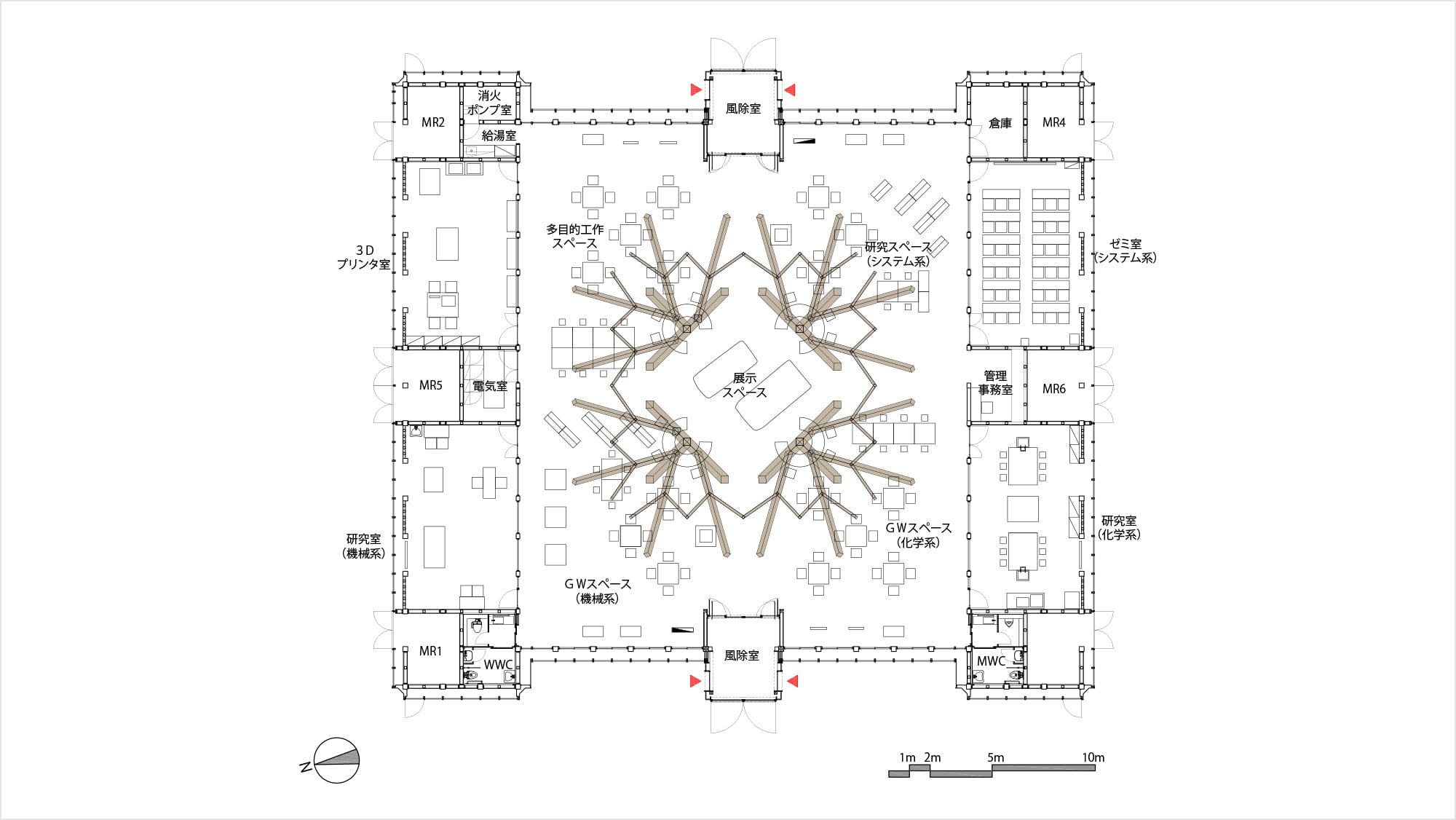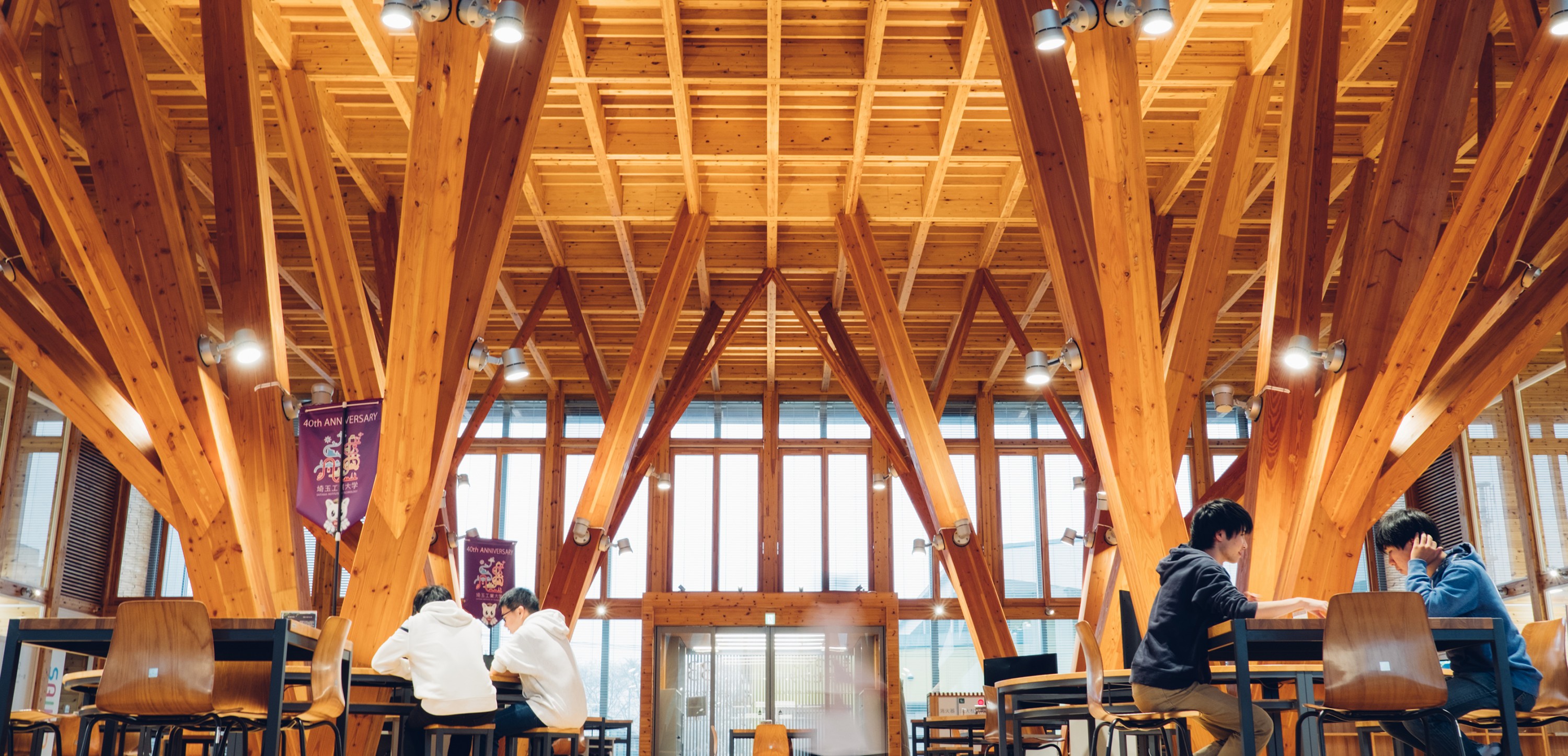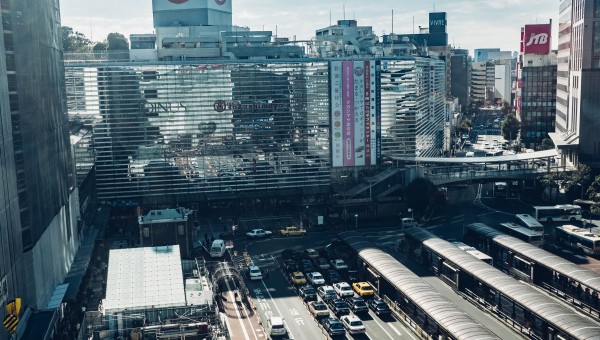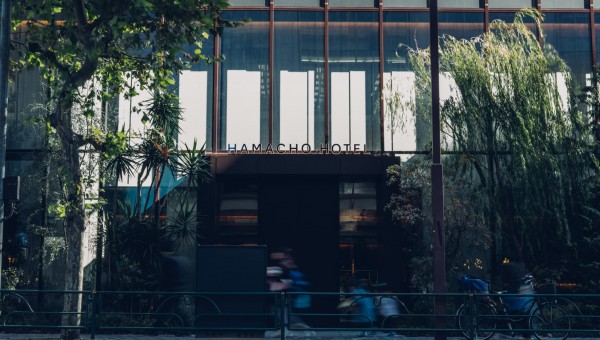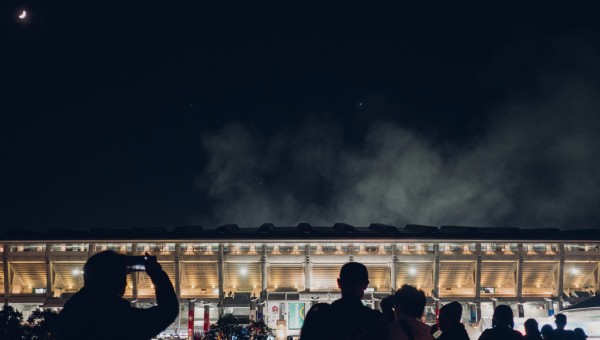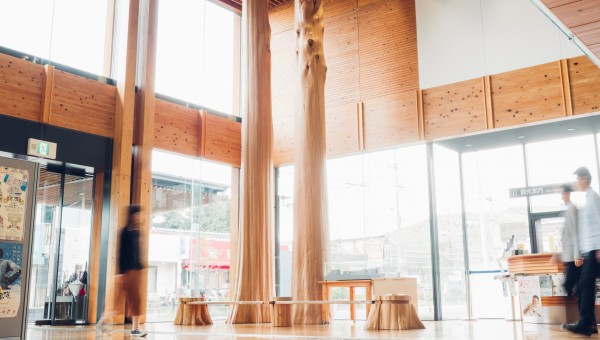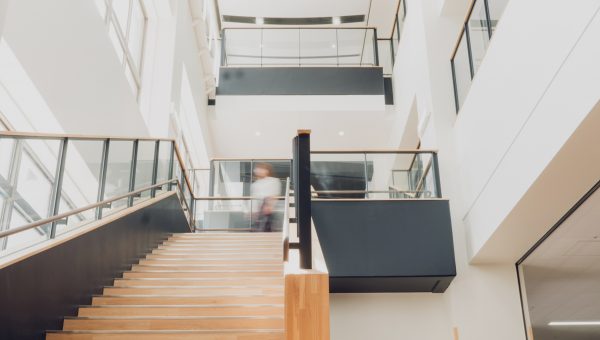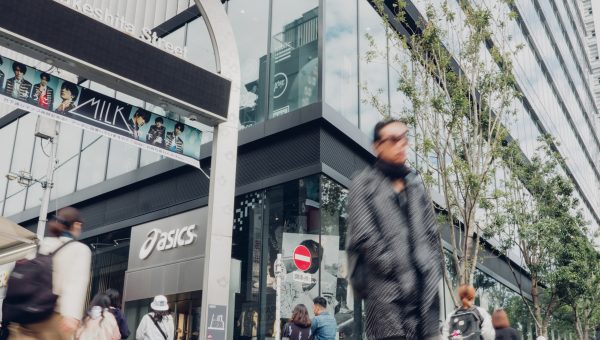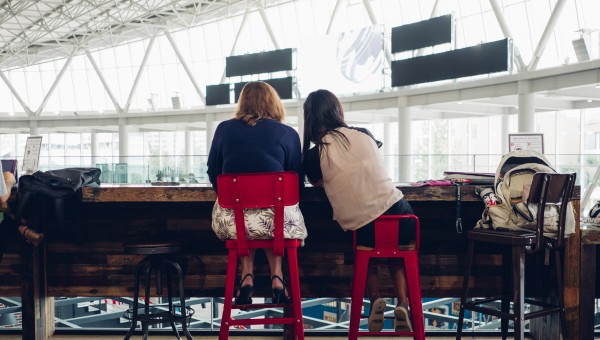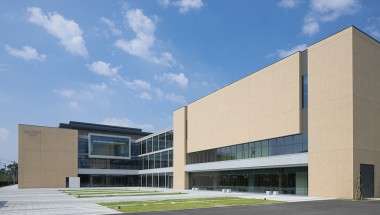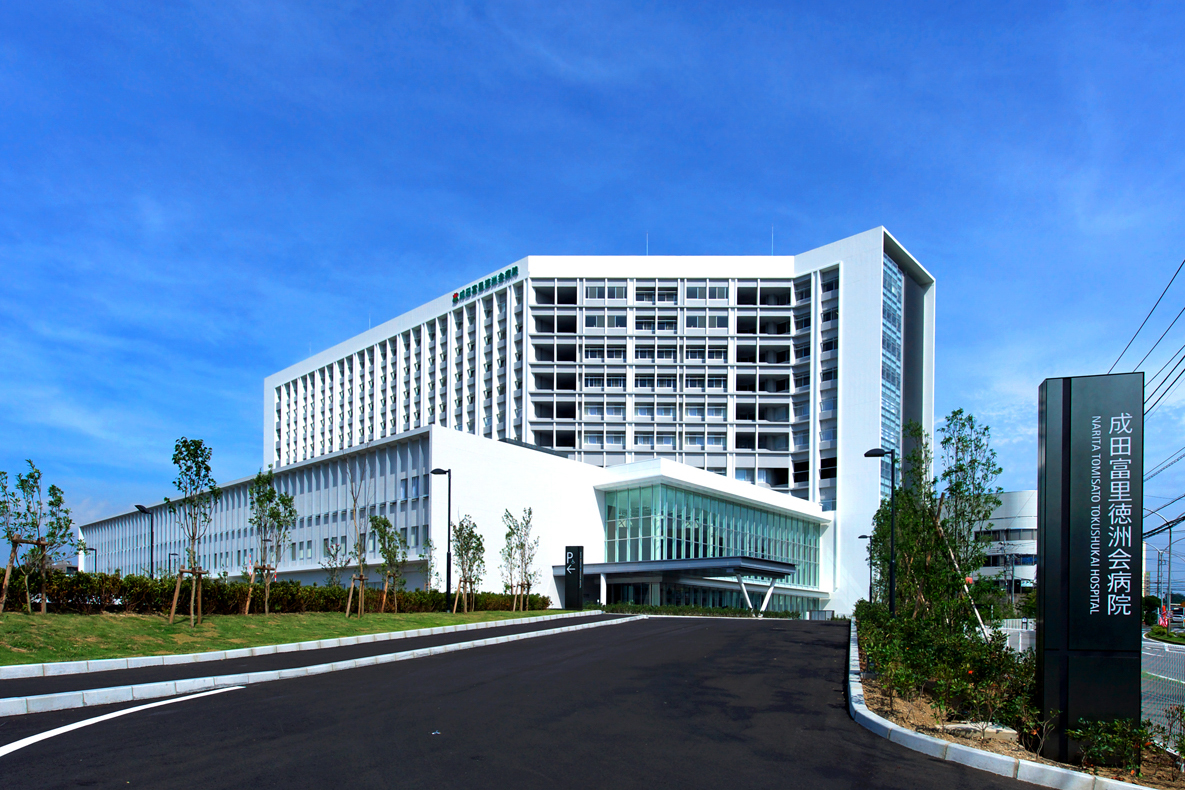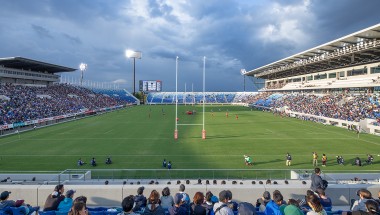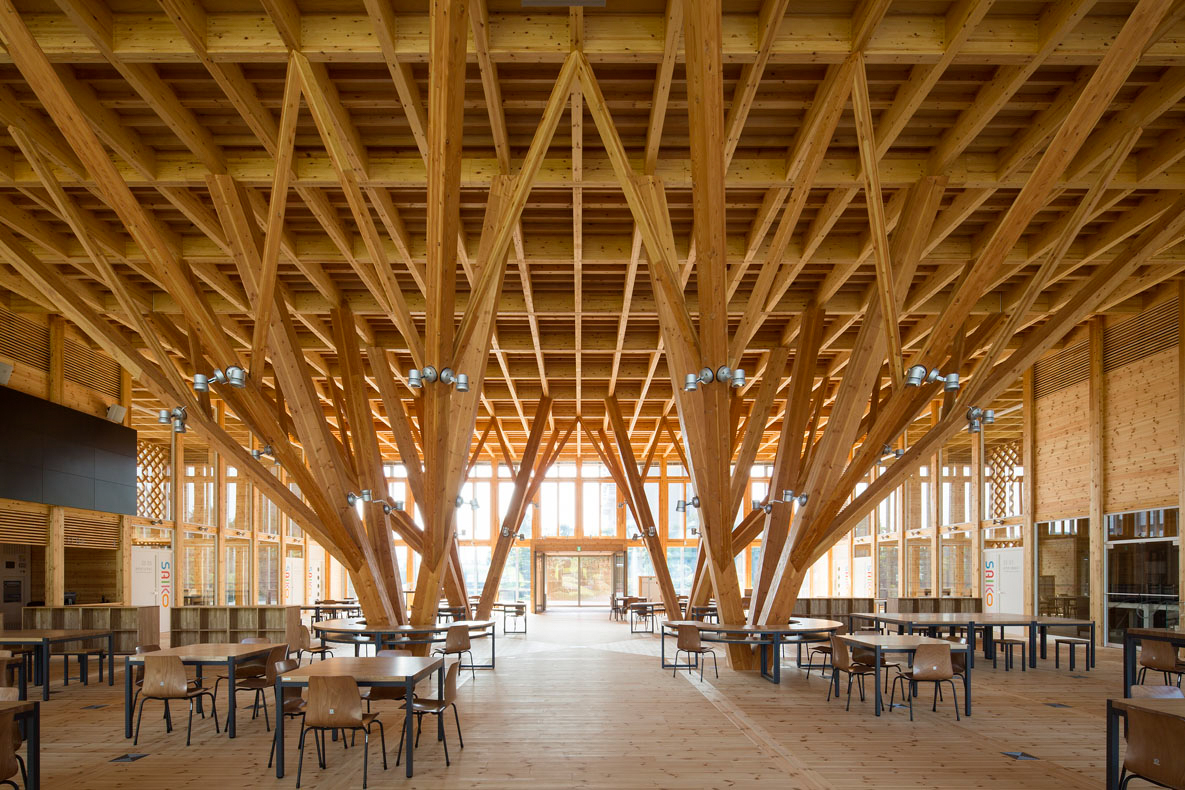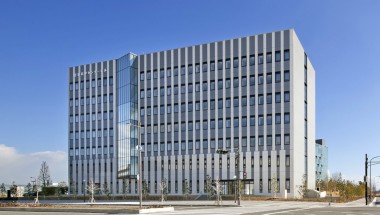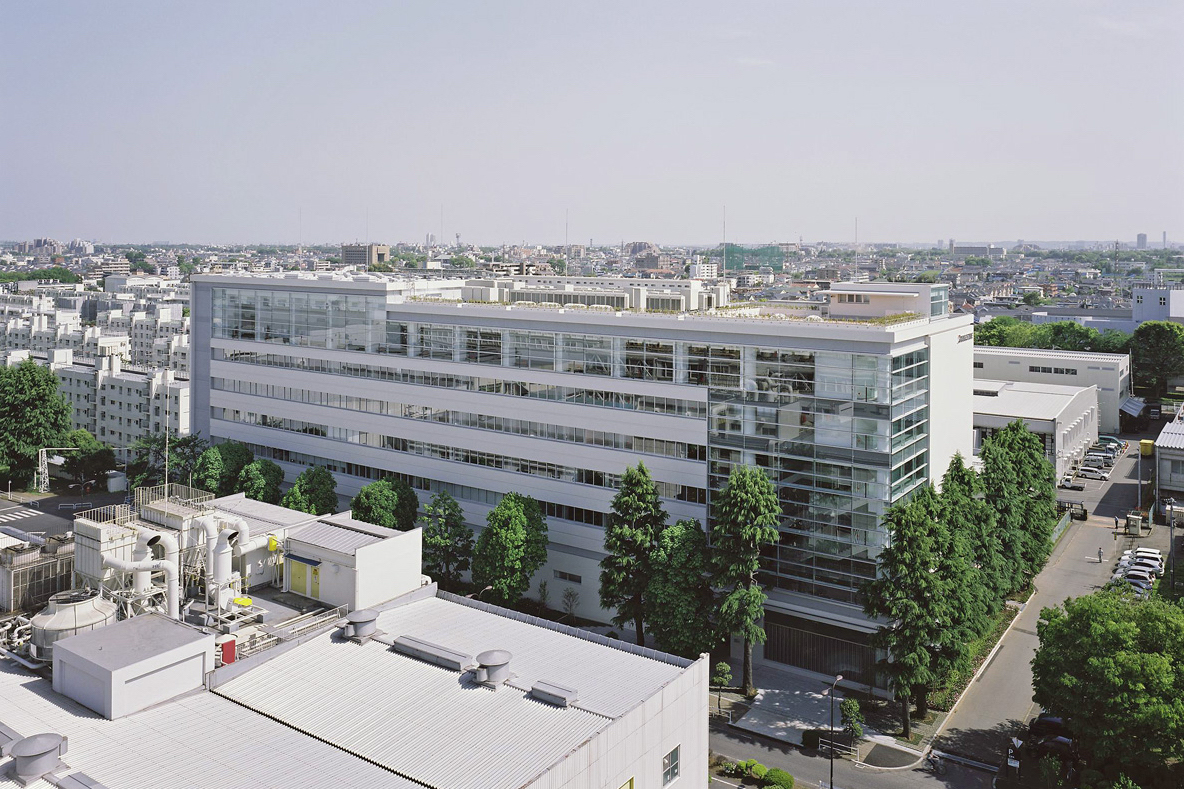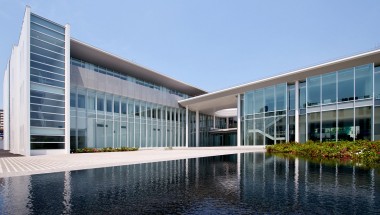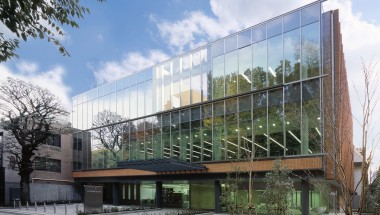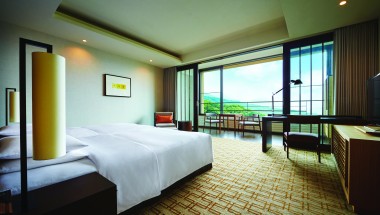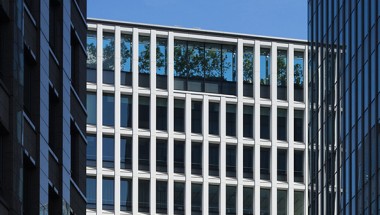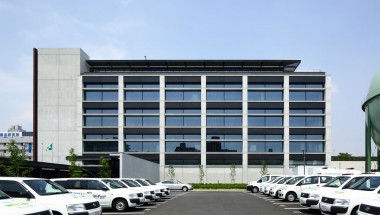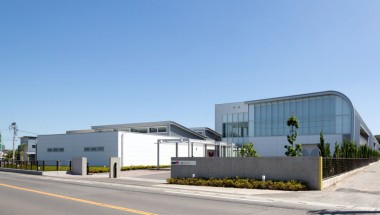The vast, tree-lined forest here seems to beckon people inward. They naturally congregate and find themselves caught up in discussion. Gather round the trees for intimate conversation. Flock to the forest for a wealth of communication.
That vision led to the creation of the Saitama Institute of Manufacturing Research Center.
The vast space employs a craftsmanlike mentality, adopting lumber sized for mainstream residences.
This is the place guests first see.
My lab is located in a different annex, but I come here every couple of days. It has some of our main experimental facilities, which I make use of. But truth be told, one of the main reasons I make the trip is to refresh my mind. The lounge beneath the large trees is simply relaxing.
Chemistry is sometimes seen as being one of the “3D” disciplines. That is, “dirty, dangerous, and demeaning.” Chemists must handle chemical substances, which requires due safety, and in turn makes the process a closed, insulated one. Yet this space would be different. We wanted to make it open, bright, and spacious. All of the labs would be fully glass-paneled and expansive. At the center is a lounge styled out of large tree motifs. It’s so spacious and open, you would never think you are indoors. The openness of the labs has us quite excited at the new creative possibilities. The school president has espoused a vision of use of photovoltaic cells, which is one of our key research topics. We are pursuing international joint research on this subject. The experimental facilities can be found in open, glass-walled rooms, which allows for guests to see the experimental process. We often get questions from other departments about how one thing or another works. And this in turn drives communication with others.
That’s why, when guests come to the university, we first show them around the research center. They are always amazed by the tree-lined lounge and stare up in amazement. That drives conversation around a range of topics. Since the labs are glass-lined, due care was taken with the installation of equipment and desks in order. The rooms are spacious, but you also feel focused and alert. I realized that the layout is quite purposeful and is not just for looks alone, but is designed to enhance safety and ease of use.
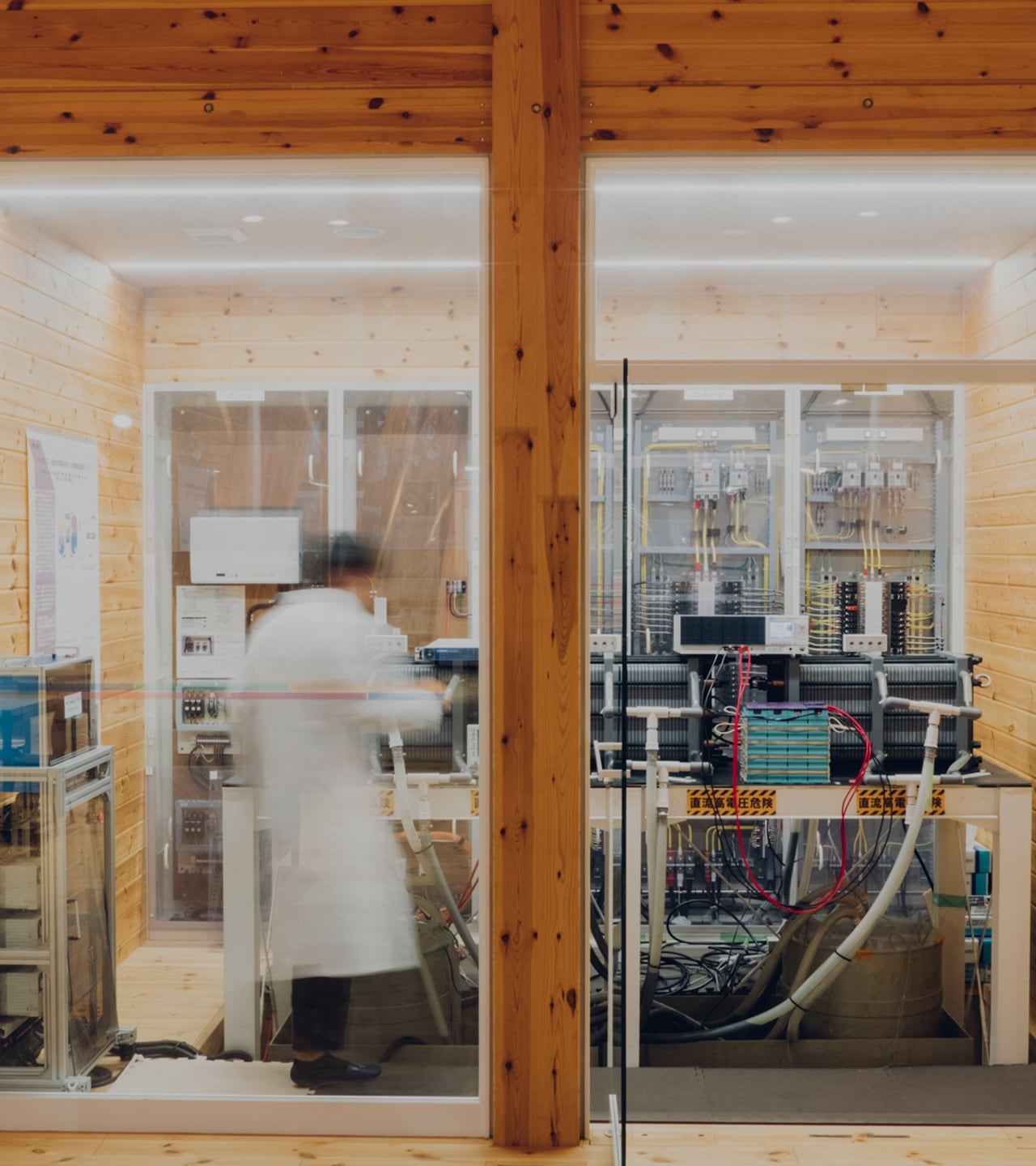
An open research environment invites a range of communication.
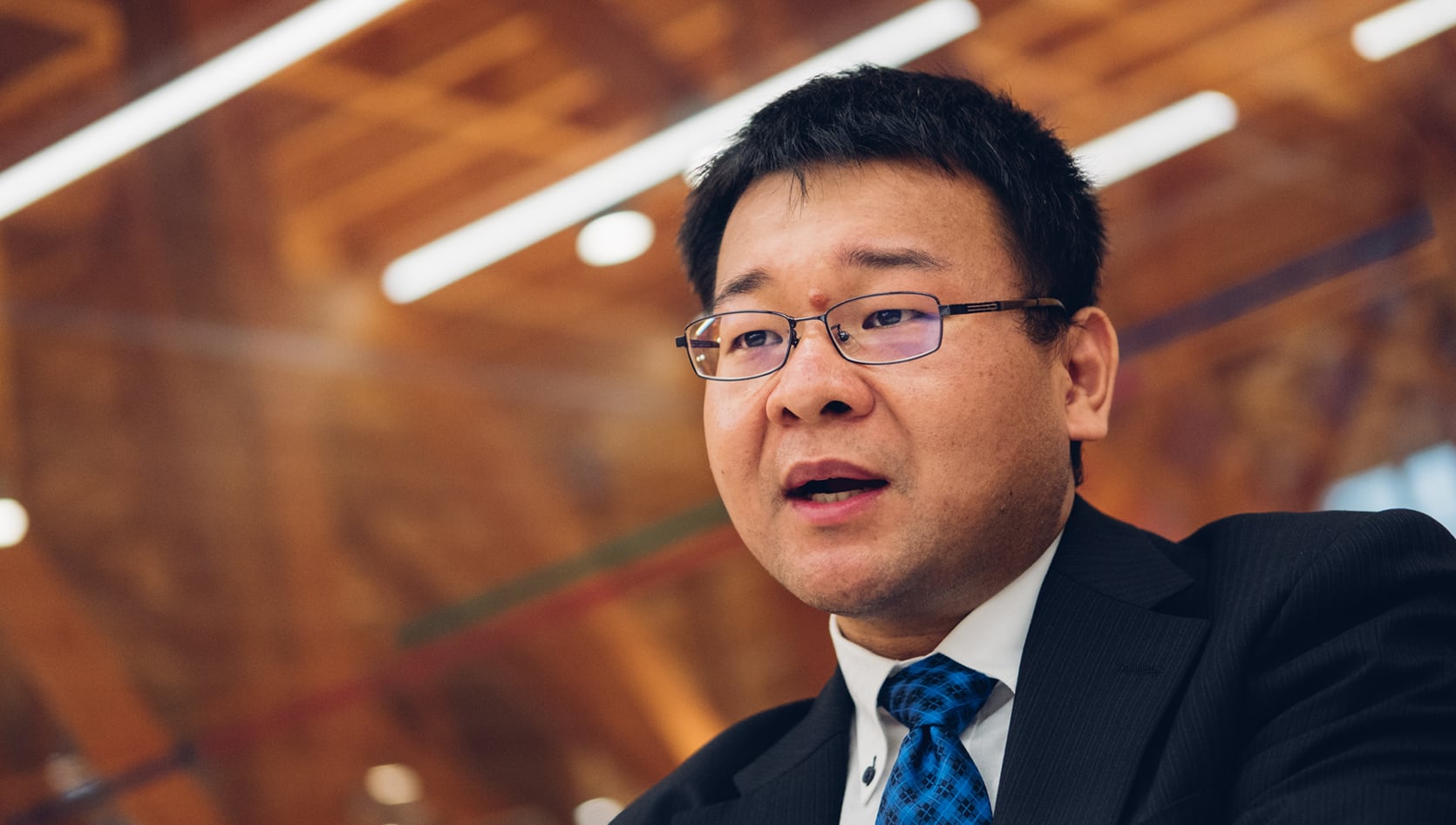
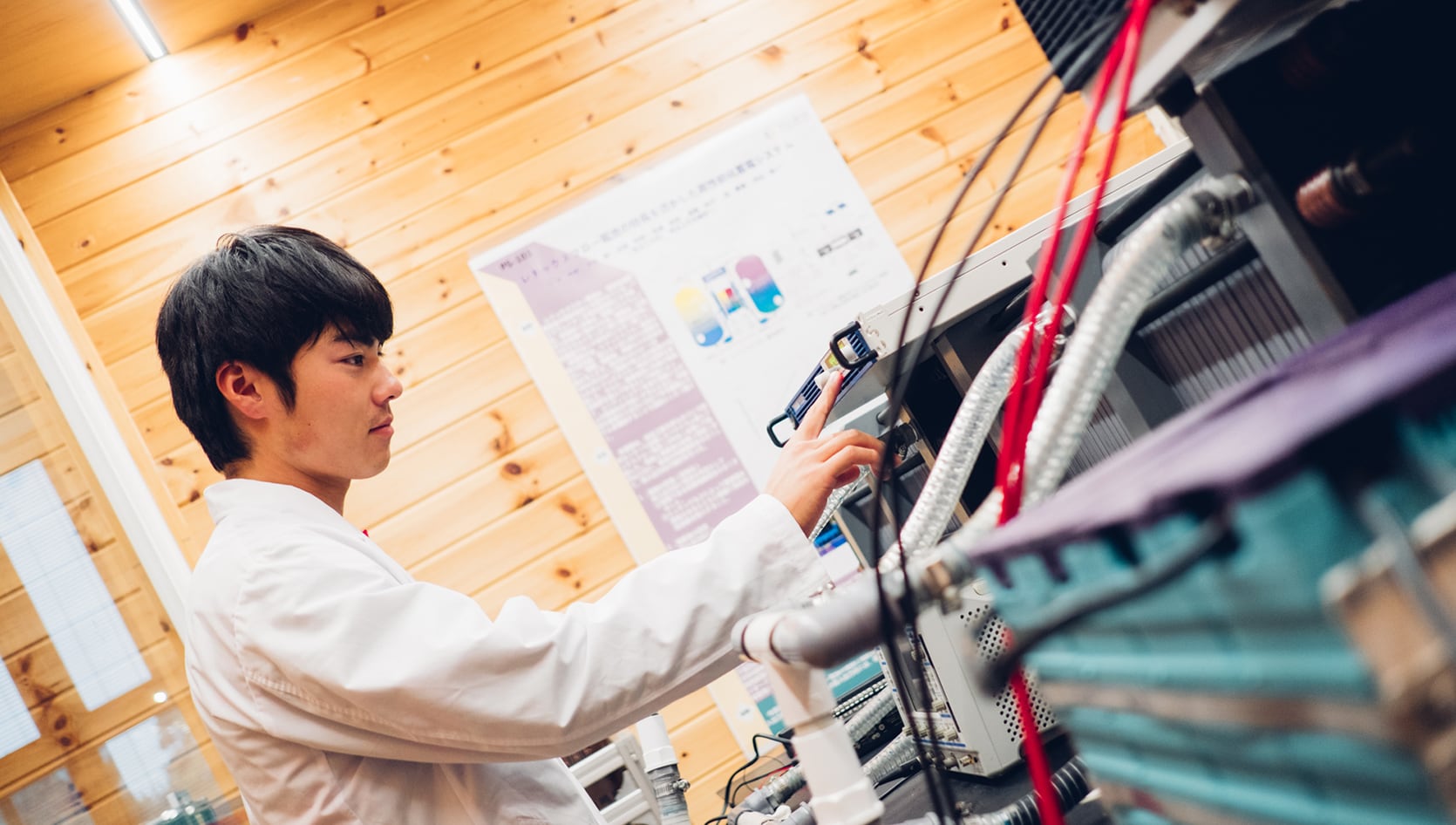
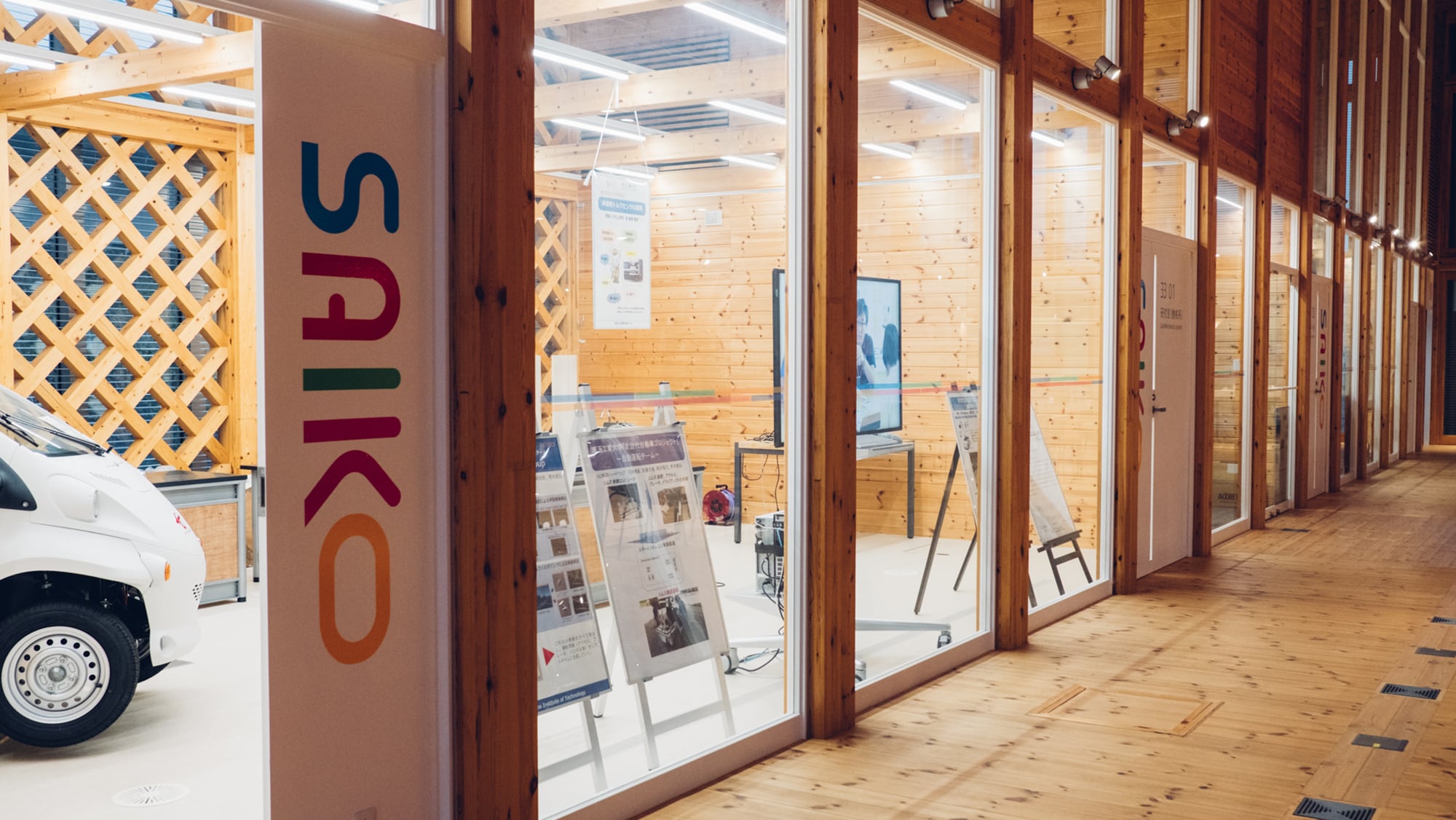
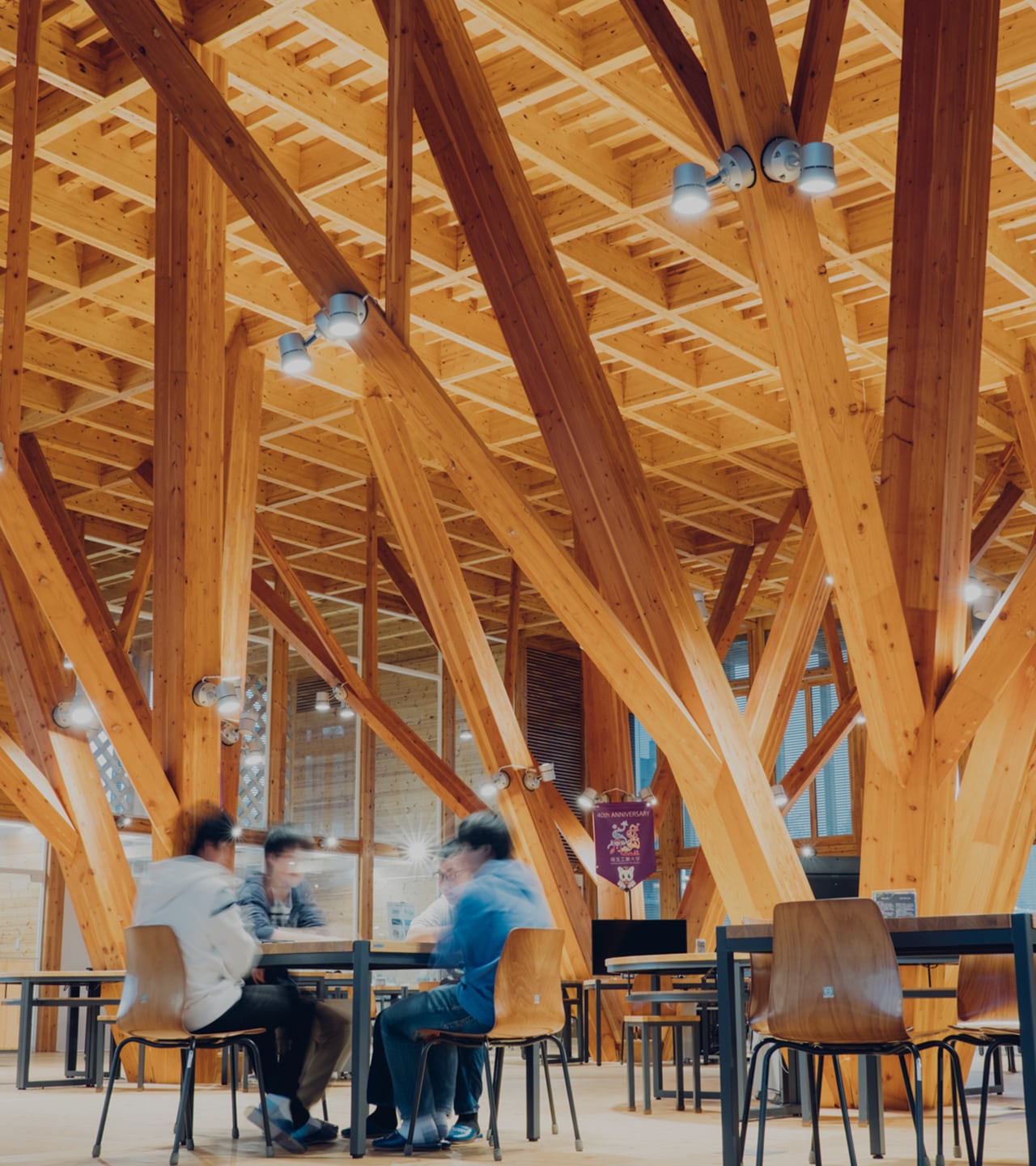
A cutting-edge research environment popular even among the students
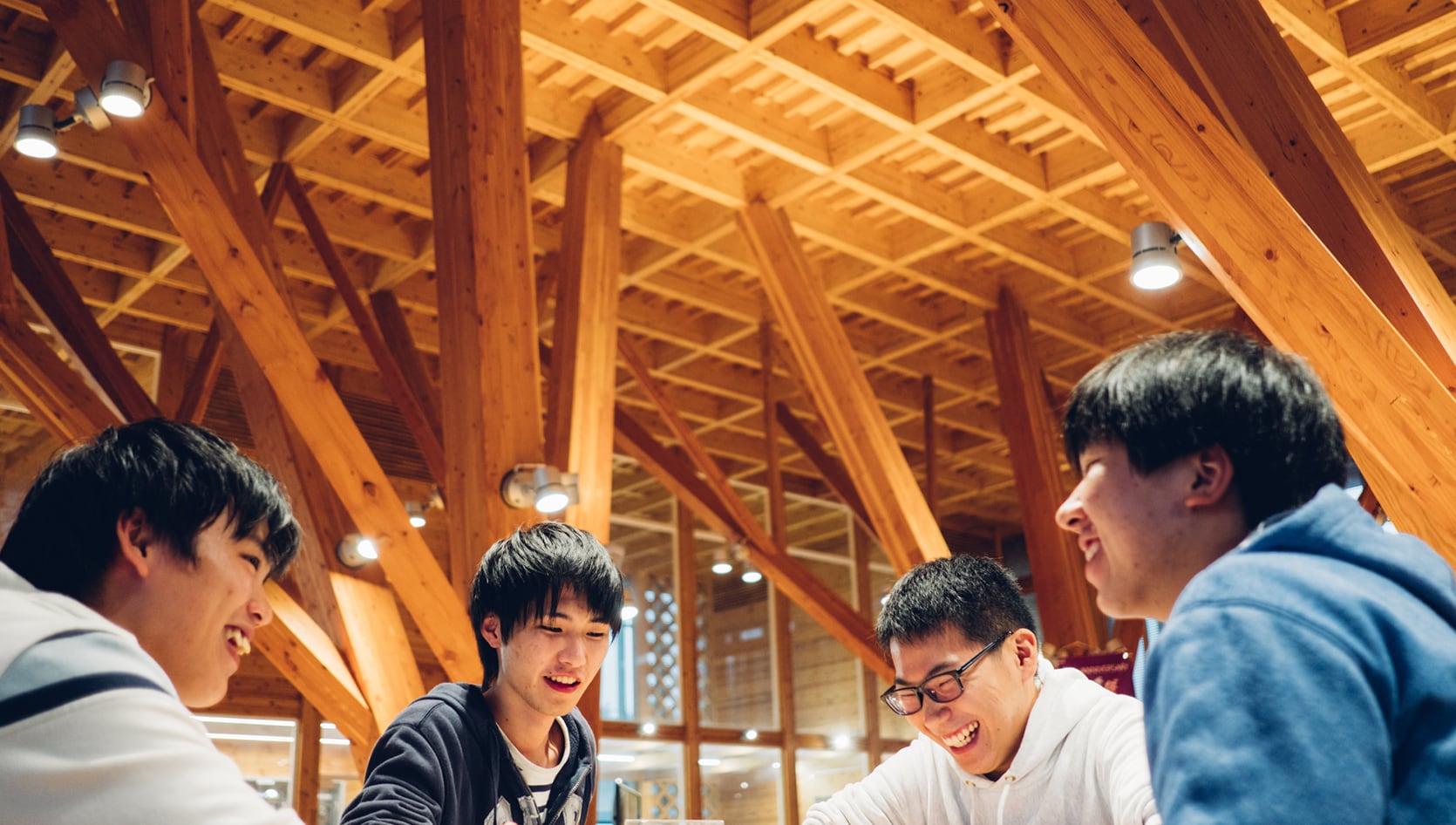
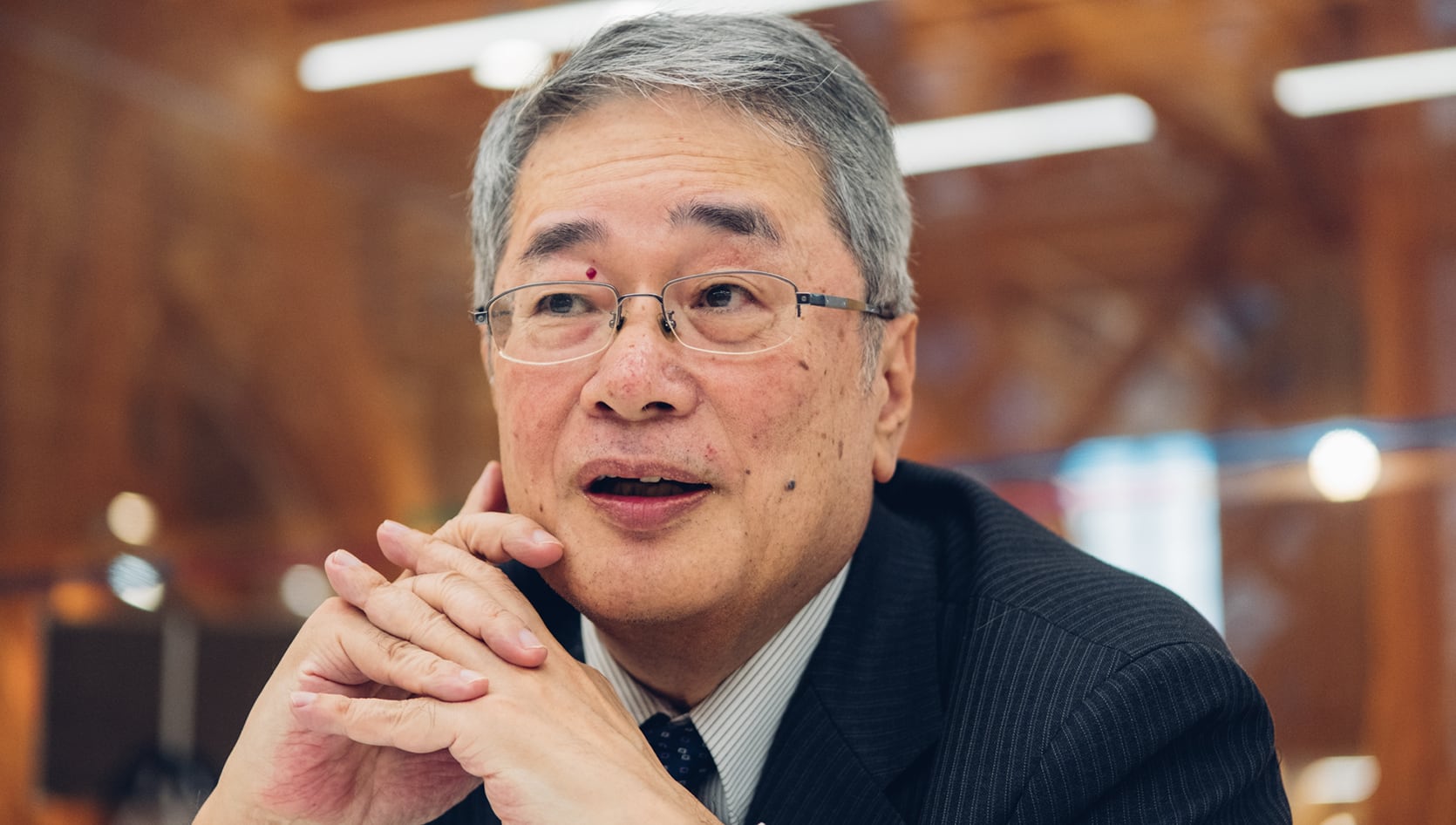
Architecture that drives research.
Given that we are a technology- and engineering-driven college, we wanted manufacturing to play a central role in our ethos. Realizing that vision required, we felt, a central development hub. That is what the center serves for. As for what we develop, the answer is, among other things, natural sources of energy, which is one of the university’s key research areas. One of the foremost types of natural energy is photovoltaics, and the top consideration there is how to develop photovoltaic cells. We have been pursuing research into redox flow bells, which are safer and more durable than lithium-ion. We pursue international collaborative research at the center. Another major area of study is electric vehicles. Autonomous cars have already run pilots on public roads, and we held an early pep rally here for the launch of a pilot.
Given that this is the hub for research and development for the whole college, the center had to be open and foster communication. We are devoted not to the research of individual scientists, but rather collaborative research on a global scale, in which people of all types work together. We also actively invite academic conferences to be held here. Given this ethos, we wanted the structure itself, even that used to house equipment, to be symbolic of our zeal for manufacturing. The resulting design exceeded even our wildest expectations. The large wooden framework is majestic and inviting at the same time. Everyone has worked with wood at some point in their lives. We really feel it fosters the academic culture we are looking for, where we treat the foundational spirit of manufacturing as equally important to driving leading research. This site has become extremely popular among the students, almost as much as the large cafeteria, and is a place they love to spend time.

Building a vast space out of residential-size lumber.
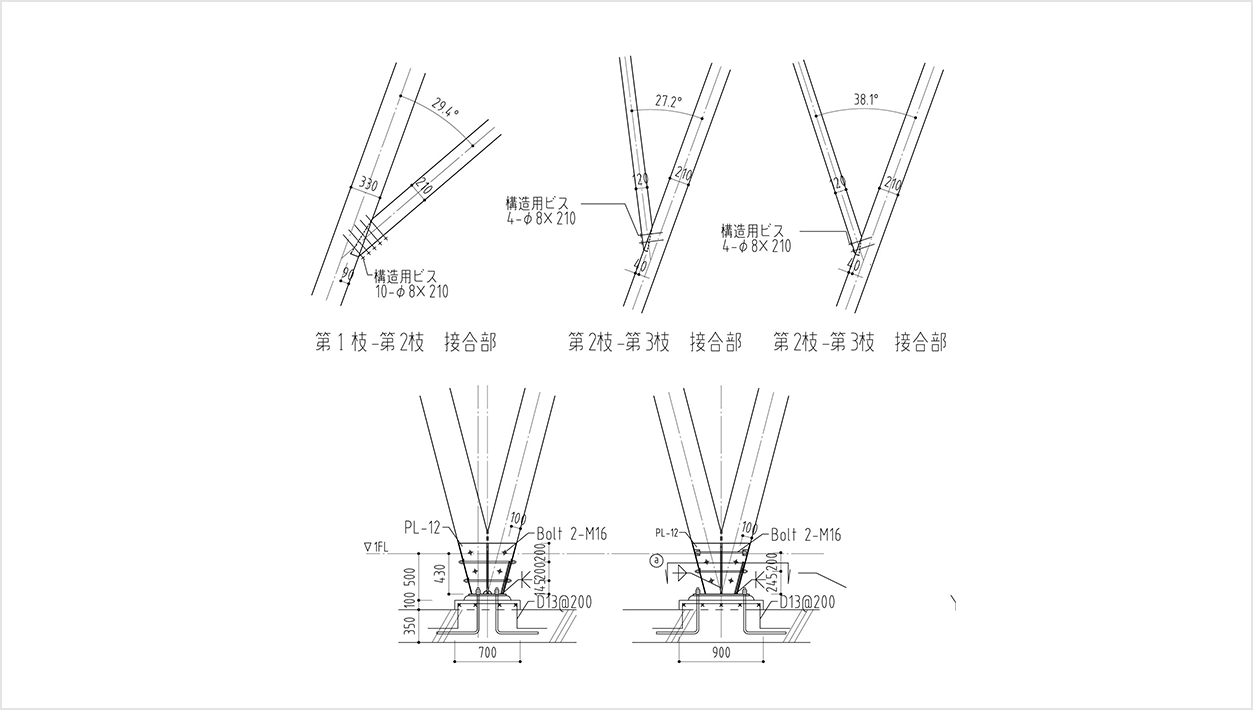
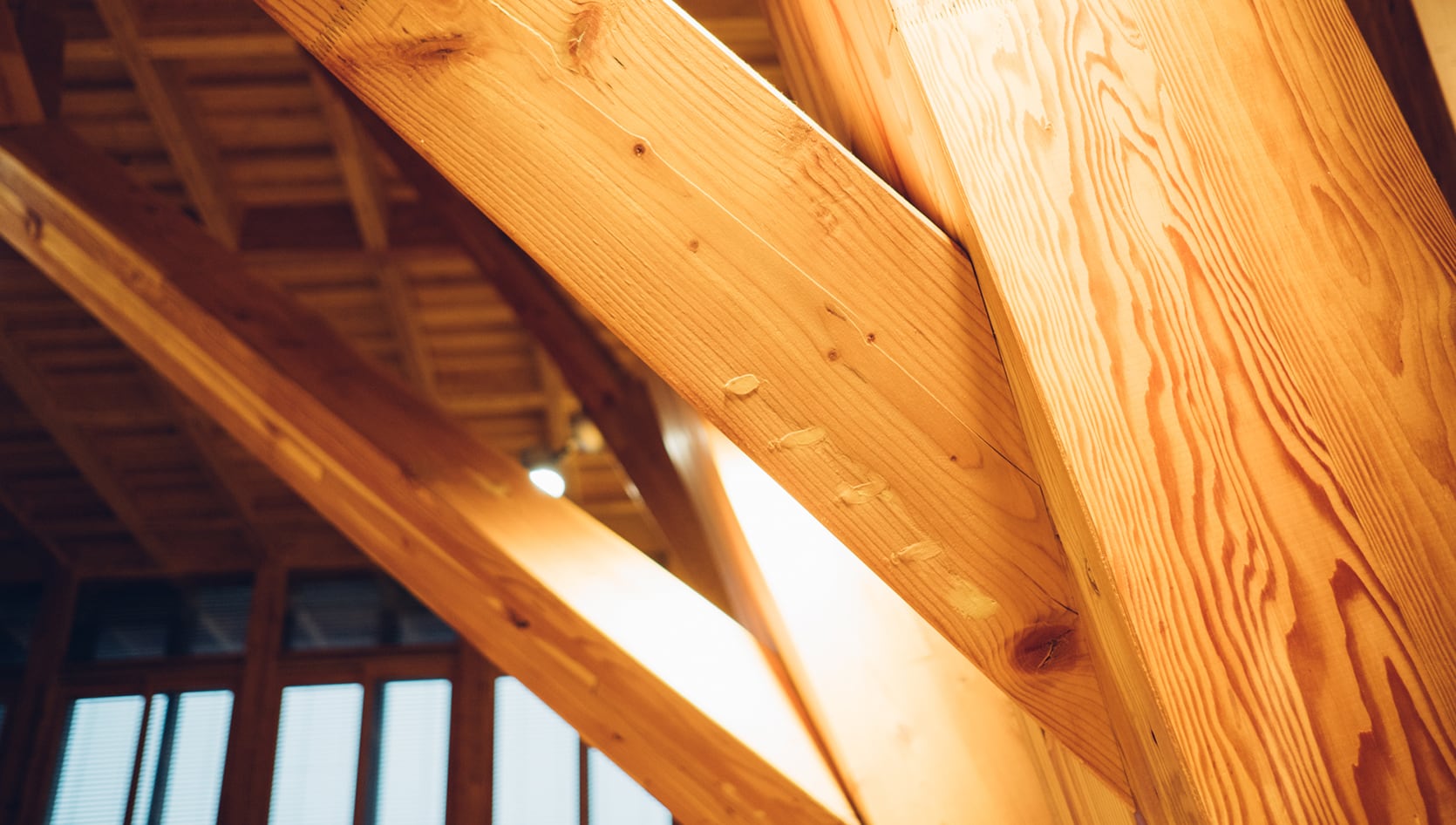
A highly open and transparent design makes research accessible.
The new design offers this technical institute new laboratories and shared workspaces for their manufacturing, mechanical, chemistry, and systems research. The workspaces are large and highly unique zones styled as 25m squares supported by four tree-shaped columns. The entirety of the structure is made of wood. Rather than using laminated wood, the materials are a combination of laminate and traditional lumber sized to residential specifications. Production methods for lumber are being revamped of late out of consideration for the environmental and economic impact of traditional wood processing. We used more generic materials and ubiquitous techniques to produce this large space and suggest what is possible with non-specialized components.
One goal of this structure was to foster communication by opening up the research and showing it to the outside world. To that end, labs are entirely glass-paneled, and the seismic load walls are latticed, rather than using single panels. This connects sight lines between the inside and outside of the building.
The effect suggests the bifurcation and joining of branches on a tree.
The large, tree-like supports are not just aesthetic, but also deliberate from a structural point of view. The branching shape from floor to ceiling is designed to make more use of the floor space while supporting the ceiling at many points, at the same time keeping the roof compact and light. The branching may seem complex at first, but a simple ruleset is employed: each bifurcation creates 1-2 branches, which then connect on the same plane as the original branch.
The branches appear to form into a single “tree” because dovetail joints are used, eschewing any metallic effect. This is a true testament to woodworking. The original design called for four large “trees” branching symmetrically and arranged evenly in the space. Given the constraints of the space, we eventually devised to place the four trees in the center. They are now asymmetrical, but the congeries of trees resembles a larger tree sprouting roots and creates a certain symmetry and balance.
